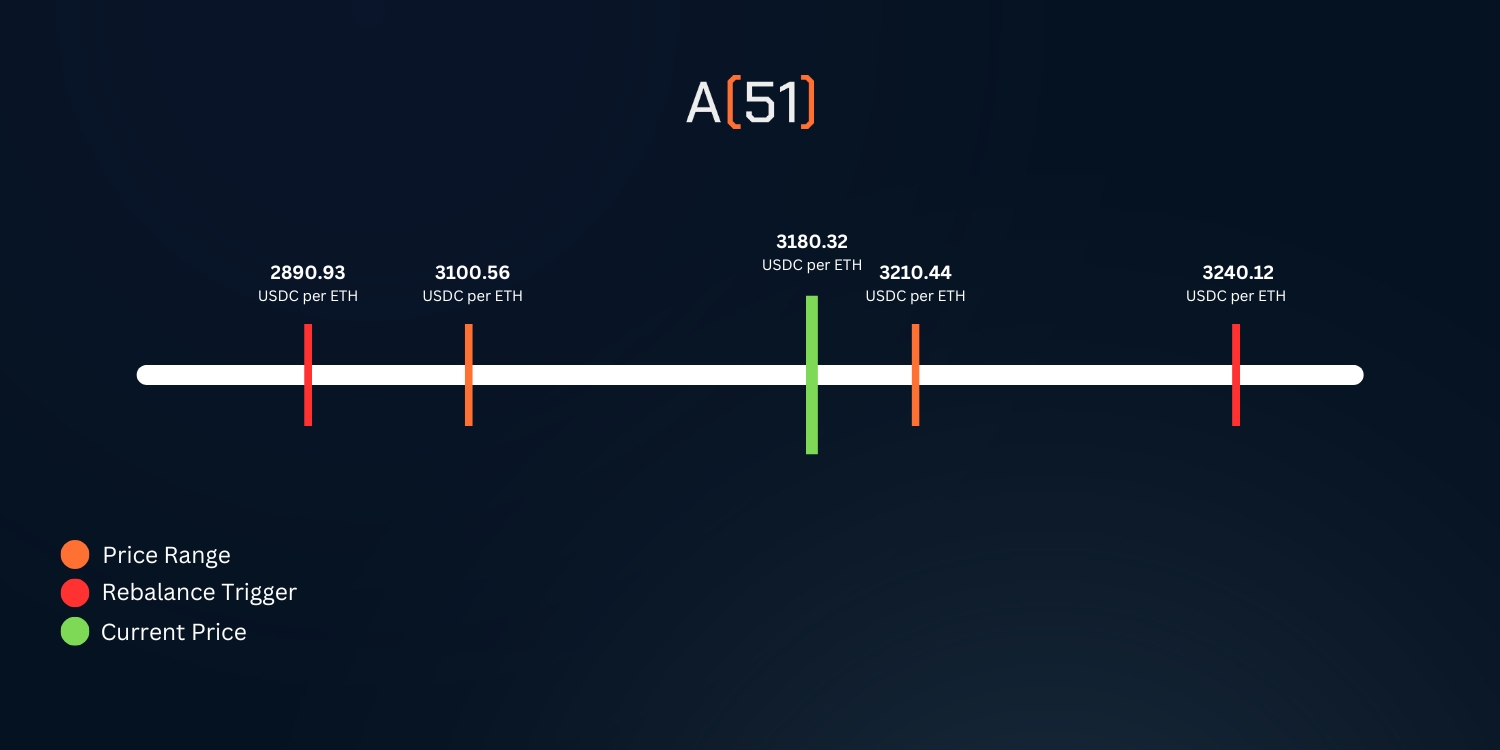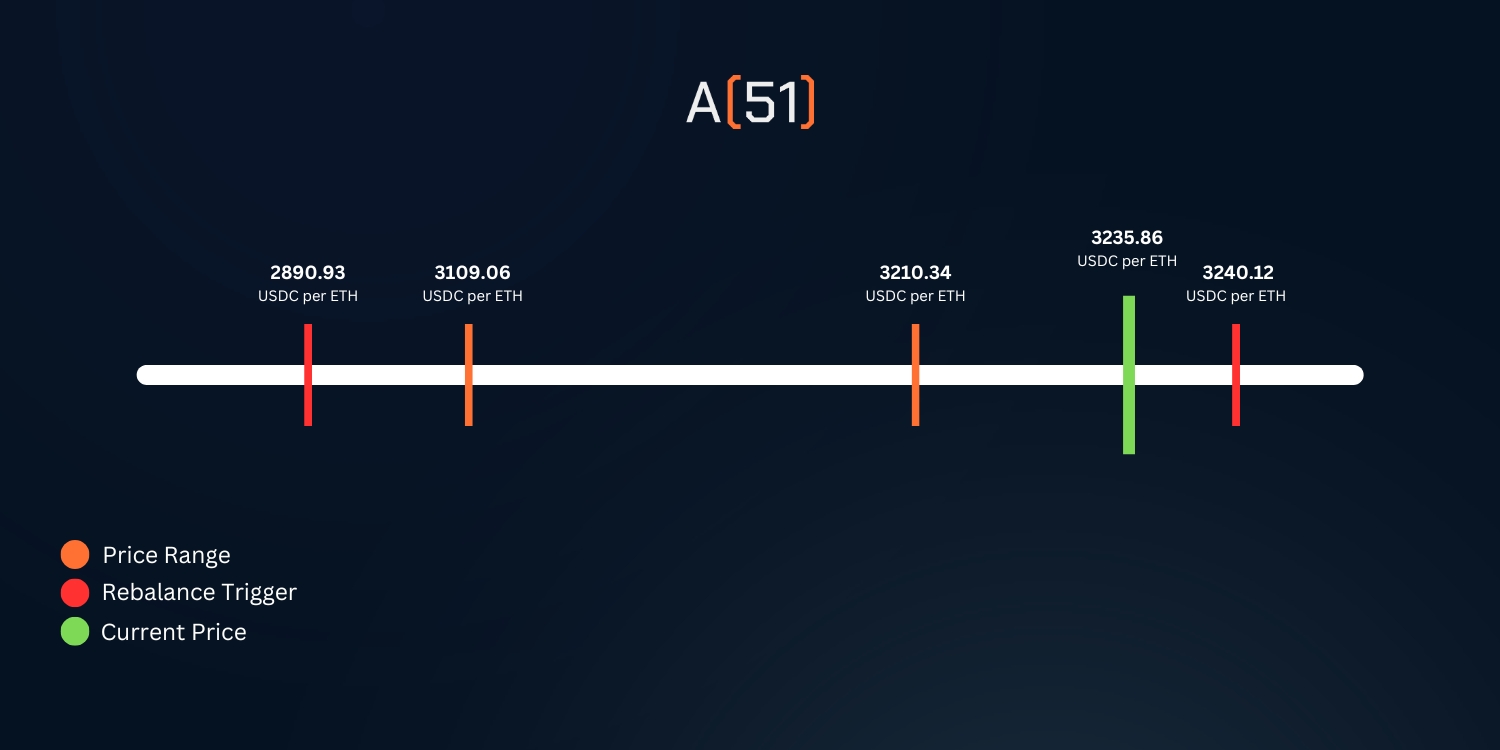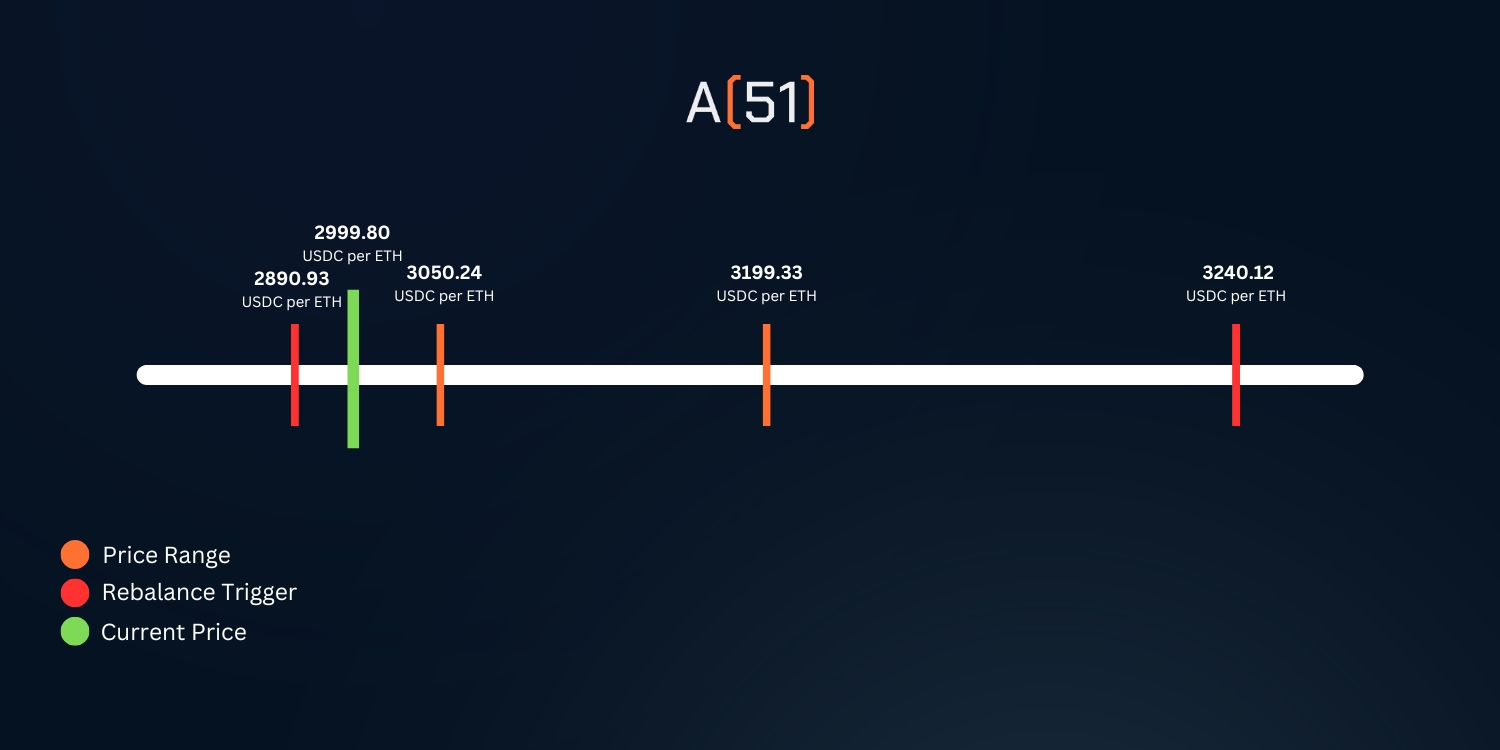Auto-Rebalance Types
After selecting a market mode, you have to choose a rebalancing type.
How Do I Choose a Rebalancing Type?
Based on your expertise, market understanding, and risks associated with each rebalancing mechanism, select one of the two rebalancing types.

Understanding Divergence Loss
When the price of tokens in a liquidity pool diverges from the price at the time of deposit, it incurs a loss to the LP called Divergence Loss (DL) or Impermanent Loss (IL). If you withdraw or rebalance your liquidity position at these prices or when your position is out of the market’s current price range, it becomes a permanent loss. It especially happens with the volatile token prices.
Trailing Rebalancing
Trailing rebalancing works by trailing the market price before executing the rebalance. It does so to wait for the market price to come back to the previous range as it goes out of range usually for a very short time. It also prevents unnecessary divergence loss by quickly swapping tokens in the pool and keeping the LP position in the range.
When the TWAP of pool, for example TWAP of USDC per ETH in an $ETH/$USDC pool, hits the rebalancing threshold on either side of the price range, A51 will put that position right behind the new price. This means that it will not swap your assets to bring it back to the range essentially saving from greater loss of buying your asset on a higher price or selling on a lower price.
Let’s understand this by an example of a pool ETH/USDC.
Scenario 1: When $ETH Price Goes Above the Range
Your liquidity position trails the current $ETH price as it increases and goes out of range. It is suitable for bullish market trends so you would be able to capture more of the upside.
Example: Trailing Rebalancing in A51 Finance ($ETH/$USDC Pool)
Bull Mode
Let’s walk through a scenario using the $ETH/$USDC pool on Base via BaseSwap to understand how trailing rebalancing works in A51 Finance in Bull Mode.
Intents You Setup Initially:
Price Range for the strategy:
Minimum Price: 3100.56 $USDC per $ETH
Maximum Price: 3210.44 $USDC per $ETH
Rebalance Triggers (Cushion):
Min Trigger: 2890.93 $USDC per $ETH
Max Trigger: 3240.12 $USDC per $ETH
Current TWAP Price:
3180.32 $USDC per $ETH

What Happens When the $ETH Price Increases?
Let’s say the price of $ETH rises to 3235.86 $USDC per $ETH.
Rebalancing Action: The rebalancing mechanism adjusts the price range to trail just behind the new price.
New Price Range: 3109.06 – 3210.34 $USDC per $ETH This ensures your liquidity is positioned optimally for the updated market price.

If $ETH’s price continues to rise and touches the maximum rebalance trigger (3240.12 $USDC per $ETH):
Rebalancing Execution: The system swaps $ETH for $USDC, rebalancing your position automatically.
What Happens When the $ETH Price Falls Back?
If the price of $ETH falls back into the original price range (3100.56 – 3210.44 $USDC per $ETH):
No Rebalancing Required: The system does not take action since the price remains within the predefined range. Your liquidity stays intact without unnecessary adjustments.
Scenario 2: When $ETH Price Drops Below the Range
Your liquidity position trails the current $ETH price as it decreases and goes out of range. It is suitable for bearish market trends so you can protect yourself against decreasing prices.
Example: Trailing Rebalancing in A51 Finance ($ETH/$USDC Pool)
Bear Mode
Let’s walk through a scenario using the $ETH/$USDC pool on Base via BaseSwap to understand how trailing rebalancing works in A51 Finance in Bear Mode.
Intents You Setup Initially:
Price Range for strategy:
Minimum Price: 3100.56 $USDC per $ETH
Maximum Price: 3210.44 $USDC per $ETH
Rebalance Triggers (Cushion):
Min Trigger: 2890.93 $USDC per $ETH
Max Trigger: 3240.12 $USDC per $ETH
Current TWAP Price:
3180.32 $USDC per $ETH

What Happens When the $ETH Price Decreases?
Let’s say the price of $ETH falls to 2999.8 $USDC per $ETH.
Rebalancing Action: The rebalancing mechanism adjusts the price range to trail just behind the new price.
New Price Range: 3050.24 – 3199.33 $USDC per $ETH This ensures your liquidity is positioned optimally for the updated market price.

If $ETH’s price continues to rise and touches the minimum rebalance trigger (2890.93 $USDC per $ETH):
Rebalancing Execution: The system swaps $USDC for $ETH, rebalancing your position automatically.
What Happens When the $ETH Price Falls Back?
If the price of $ETH falls back into the original price range (3100.56 – 3210.44 $USDC per $ETH):
No Rebalancing Required: The system does not take action since the price remains within the predefined range. Your liquidity stays intact without unnecessary adjustments.
Scenario 3: When $ETH Price Fluctuates Below & Above the Range
Your liquidity position trails the current $ETH price as it increases or decreases or goes out of range. It is suitable for markets with little or no clear trend, that is, highly volatile so you can capture maximum fees.
Scenario 4: When $ETH Price Remains Static
Your liquidity position remains fixed and does not trail the changing $ETH price. This mode is best used with other parameters like liquidity distribution.
Trailing rebalancing mechanism makes sure your position is always within the active price range so that you can keep earning fees and yields from trading volume and avoid DL as much as possible.
Since it works by trailing the market price instead of rebalancing the position right away. Therefore, it prevents unnecessary divergence losses.
The intent bot monitors the liquidity positions every 5 minutes. If the position is out-of-range (has left the price range and rebalance triggers limits), rebalancing will be executed according to the strategy preferences based on the updated price.
Active Rebalancing
Active rebalancing adjusts your liquidity position within the market’s price range by actively adjusting the distribution of tokens in your liquidity pool. It ensures your position is always within the active price range to keep earning fees and yields from trading volume.
Let’s understand this by an example of a pool ETH/USDC. ETH has a volatile price and it could go up or down.
- Scenario 1: When $ETH price goes above the range
When the price of $ETH goes above the maximum price range, your position will go out of range and will stop generating fees and yields. A51 will actively rebalance your position by converting your $ETH to $USDC partially since its price increased to bring your LP position back to the range.
- Scenario 2: When $ETH price drops below the range
When the price of $ETH drops below the minimum price range, your position will go out of range and will stop generating fees and yields. A51 will actively rebalance your position by converting your $USDC to $ETH partially since its price decreased to bring your LP position back to the range.
Set a Price Range
A51 doesn’t limit you to a fixed price range or ratio while defining auto-rebalance intents.
You can define the minimum and maximum price range around the current price. You can make it in a custom ratio according to your assets and investment mindset.
